New Delhi – The Indian Army Monitoring Operation Sindoor has been documented through the first official images released by the Indian Army’s Headquarters (IHQ) Operations Room. These unprecedented visuals showcase the coordinated military leadership during India’s strategic response to cross-border terrorism. The Indian Army Monitoring Operation Sindoor images reveal Army chief General Upendra Dwivedi, Navy chief Admiral Dinesh K Tripathi, and Air Force chief Air Chief Marshal AP Singh leading the comprehensive military operation.
The release of these Indian Army Monitoring Operation Sindoor photographs marks a significant moment in India’s military transparency, demonstrating the unified command structure that orchestrated the strategic response against Pakistani terror infrastructure. The images provide unprecedented insight into how the Indian Army Monitoring Operation Sindoor was conducted at the highest levels of military command.
Background: Pahalgam Terror Attack Triggers Military Response
The Indian Army Monitoring Operation Sindoor was launched as a direct response to the devastating Pahalgam terror attack that occurred on April 22. This heinous incident resulted in the death of 26 people, predominantly tourists, who were brutally targeted by militants. The attack served as the catalyst for the Indian Army Monitoring Operation Sindoor, demonstrating India’s zero-tolerance policy toward cross-border terrorism.
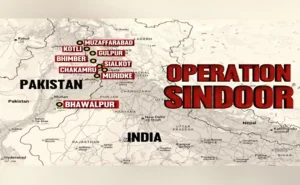
The Pahalgam massacre represented a new low in terrorist activities, specifically targeting innocent civilians and tourists. The Indian Army Monitoring Operation Sindoor was conceived as a comprehensive response to eliminate the terror infrastructure responsible for such attacks. The operation aimed to send a clear message that India would not tolerate attacks on its citizens and would respond decisively to terrorist activities.
Also Read About The PM Modi Bhuj Visit Transforms Gujarat with Massive Rs. 53,400 Crore Development Projects
Tri-Service Command Structure in Action
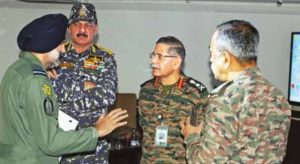

The Indian Army Monitoring Operation Sindoor images reveal the seamless coordination between India’s three military services. Army chief General Upendra Dwivedi’s leadership during the Indian Army Monitoring Operation Sindoor showcased the ground forces’ strategic planning and execution capabilities. His presence in the operations room demonstrated the Army’s central role in coordinating the cross-border strike.
Navy chief Admiral Dinesh K Tripathi’s involvement in the Indian Army Monitoring Operation Sindoor highlighted the naval dimension of India’s security response. The Air Force chief Air Chief Marshal AP Singh’s participation in Indian Army Monitoring Operation Sindoor emphasized the crucial air power component that enabled precision strikes against terrorist targets.
The tri-service coordination visible in the Indian Army Monitoring Operation Sindoor images represents a paradigm shift in India’s military response mechanism, showcasing integrated warfare capabilities and unified command structure.
Strategic Execution on May 7
The Indian Army Monitoring Operation Sindoor was executed on May 7, marking a decisive moment in India’s anti-terrorism strategy. The operation demonstrated surgical precision in targeting terrorist infrastructure while avoiding civilian casualties. The Indian Army Monitoring Operation Sindoor strikes were conducted with meticulous planning and intelligence coordination.
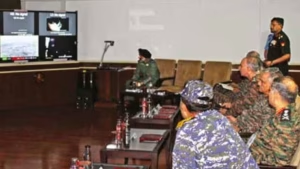
The timing of the Indian Army Monitoring Operation Sindoor sent a strong message to Pakistan and terrorist organizations that India would respond swiftly and decisively to attacks on its citizens. The May 7 operation showcased India’s enhanced military capabilities and determination to eliminate cross-border terrorism.
Pakistan’s Retaliatory Attempts and Indian Response
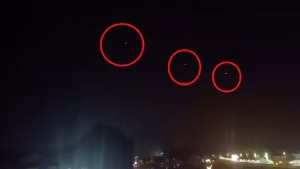
Following the successful execution of Indian Army Monitoring Operation Sindoor, Pakistan attempted retaliatory attacks on Indian military bases on May 8, 9, and 10. These Pakistani attempts were met with strong and decisive responses from the Indian side, demonstrating the continued vigilance during the Indian Army Monitoring Operation Sindoor aftermath.
The Indian Army Monitoring Operation Sindoor command structure remained active throughout these retaliatory attempts, ensuring comprehensive protection of Indian territories and military installations. The sustained monitoring during the Indian Army Monitoring Operation Sindoor period prevented any successful Pakistani retaliation.
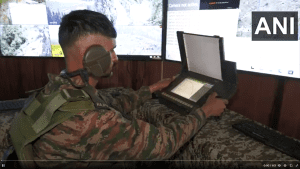

Indian forces’ response to Pakistani retaliatory attempts validated the effectiveness of the Indian Army Monitoring Operation Sindoor command structure and demonstrated India’s superior military preparedness and tactical advantage.
Diplomatic Resolution and Ceasefire Understanding
The escalation following Indian Army Monitoring Operation Sindoor was diplomatically resolved when Foreign Secretary Vikram Misri announced on May 10 that India and Pakistan had reached an understanding to stop all firings and military actions on land, air, and sea with immediate effect. This diplomatic resolution came after the successful completion of the Indian Army Monitoring Operation Sindoor objectives.
The ceasefire agreement demonstrated that the Indian Army Monitoring Operation Sindoor had achieved its strategic objectives of deterring future terrorist attacks while avoiding prolonged military confrontation. The diplomatic success following the Indian Army Monitoring Operation Sindoor showcased India’s balanced approach to national security.
External Affairs Minister’s Assessment of Pakistan’s Terror Infrastructure
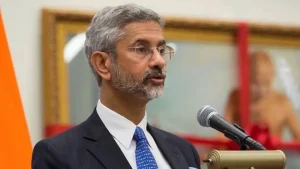

External Affairs Minister S Jaishankar’s recent statements have provided additional context to the Indian Army Monitoring Operation Sindoor rationale. Jaishankar described terrorism as an “open business” in Pakistan that is financed, organized, and used by the state and its military. This assessment validates the strategic necessity of the Monitoring of Operation Sindoor by Indian Army.
Jaishankar emphasized that India and Pakistan were “very, very far away” from nuclear conflict during their recent clashes, dismissing international concerns about escalation following the Indian Army Monitoring Operation Sindoor. His statements clarify that the operation was precisely calibrated to avoid nuclear escalation while effectively targeting terrorist infrastructure.
International Perspective and Nuclear Concerns
The External Affairs Minister criticized the Western tendency to link regional conflicts to nuclear problems, stating that such narratives encourage terrorist activities. The Monitoring of Operation Sindoor by Indian Army was conducted with careful consideration of escalation management while maintaining tactical superiority.
Jaishankar’s assertion that terrorist organizations openly operate from Pakistani cities and towns provides the international community with clear justification for the Monitoring of Operation Sindoor by Indian Army. The operation targeted these openly operating terrorist entities while maintaining strategic restraint.
Strategic Implications and Future Deterrence
The Monitoring of Operation Sindoor by Indian Army represents a new chapter in India’s counter-terrorism strategy, demonstrating enhanced military capabilities and political will to respond decisively to cross-border terrorism. The operation’s success has established a new deterrence framework against Pakistani-sponsored terrorism.
The documented Monitoring of Operation Sindoor by Indian Army command structure provides valuable insights into India’s military decision-making processes and unified command capabilities. This transparency demonstrates India’s confidence in its military operations and commitment to accountability.
The Monitoring of Operation Sindoor by Indian Army has set a precedent for future counter-terrorism operations, establishing clear protocols for tri-service coordination and strategic response to terrorist attacks. This operation will serve as a template for India’s future military responses to cross-border terrorism, ensuring swift and decisive action against threats to national security.

